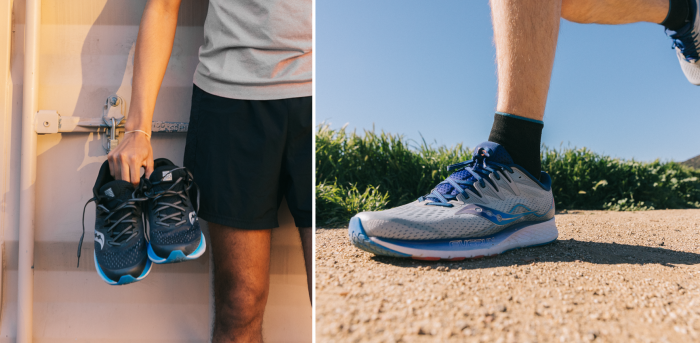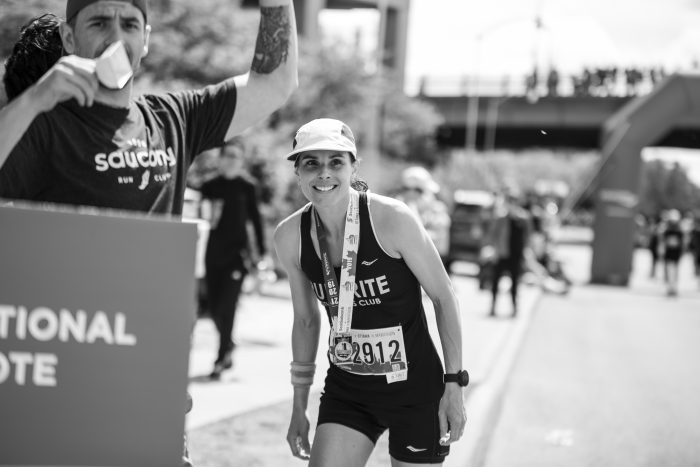QUICK PICKS: How to Choose the Best Race Day Shoe for You (Saucony)
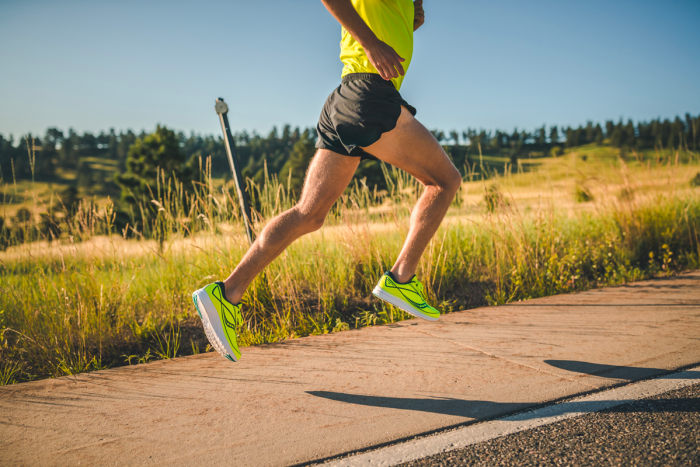
Written by Saucony
You’ve put in the long hours at the track. You’ve logged your diet and turned your body into a sleek machine. Now you’re standing in front of the wall at your local run shop trying to decide on that perfect pair of shoes to propel you to the finish line on race day. But with so many options before you, how do you decide which shoe is right for you? With that in mind, we’ve put together a few tips for technical guidance, with help from Saucony Ambassador Lecia Mancini for some tried and true advice.
Answering the question of which shoe is best for your race starts with more questions. To start, what do you want to achieve on the day? Are you looking to go faster than you ever have before? Or are you simply looking to finish the race comfortable and happy having taken in the whole experience?
To the average runner, shoes seem to fall into two opposing categories: lightweight and fast, versus cushioned and stable. And while that still rings true generally, advancements in technology have changed the game. Weight will always be a race day shoe differentiator, but going simply to the lightest weight shoe isn’t always the best decision. For most runners, the question becomes: With how little cushioning or support can I manage the distance of my race, without my feet or body getting too sore or fatigued?
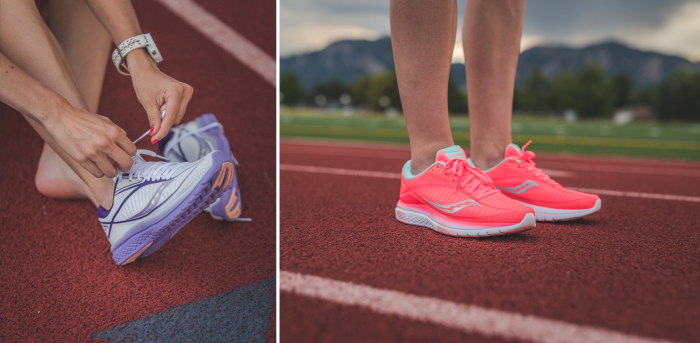
In fact, distance is the often most important factor to runners when deciding on a race-day shoe. For longer distance races many runners want a shoe that will protect and take care of their body – whereas for shorter distances like a 5K or 10K, runners will often go to much lighter weight and less cushioning. The mantra ‘Firm is fast, and softer is slower but more comfy,’ is often how many runners will find shoes.
For Lecia, striking a balance makes all the difference. “I look for a lightweight, low-drop, slightly cushioned racer that will absorb the shock of a long fast run and won’t compromise speed and agility.”
So while the lightest shoe, like a racing flat, isn’t always necessary or even the best decision for every runner, it is important to remember that the weight your shoes add to your feet will factor into your performance on the day. One ounce less of weight on each of your shoes can work out to nearly 50 to 60 pounds less per kilometre that you’re lifting with your feet. And that makes a significant difference over the length of a marathon.
One step in the right direction is to consider the shoes in which you are already training, and make improvements from there. Chances are that you have a favourite pair of shoes for training, and those shoes provide the cushioning and support to take you to the end of your long runs. If your goal on race day is just to get to the finish line feeling good, you may not even have to look further. You might want to race in the shoe you already train in.
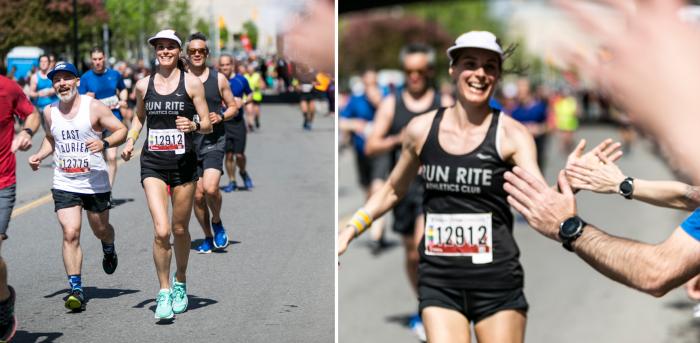
“My first ever race was in the Kinvara which is what I had trained in,” Lecia says. “Back then, I would run not considering different types of training and so I did all my mileage in the same shoe I planned to race in. Once I determined that they worked for me, I kept with them.”
Now, Lecia mixes up her shoes depending on the type of training she’s doing: flat and fast for track and speed work, like the Type A, and more cushioning for longer and recovery runs, like the Ride ISO 2. When it comes to race day, she prefers the lightweight, fast and comfortable feel of the Kinvara 10.
If time is your ultimate goal, then a race day shoe should weigh a little less than your training shoe at the very least. But, just as if you were switching up the model of your training shoe, you’ll want to deal in a series of minor adjustments, rather than drastic swings.
Learn from Lecia: “I once bought a pair of shoes that was a half-size too small and thought they felt okay in the store. That quickly turned into painful black toenails,” she recalls. “Something to keep in mind is that feet swell when they get hot, so now I will always opt for a slightly looser fit than a tight one.”
Once you’ve settled on your race-day shoe, you may not be finished yet. Lecia recommends a good “break-in” period before you arrive at the start corral. “I’ll wear my race shoes for a couple of tempo runs to simulate racing and break them in for speed, and I will also wear them for a long run or a pre-race race to know how they’ll feel for longer periods of time,” she says. “Rule of thumb for me is to have about twice the distance of the race I’m running already in the shoe, so if I’m running a marathon I want at least 90 kilometers on them.”
As always, your friendly local run shop associate is there to help you get into the shoe that will make your next race your best race. That is, if you bring your homework. Be prepared to tell them your racing goals, what you like and don’t like about your current shoes, or about any injuries or nagging soreness you may feel.
After that, all that’s left is to pick out the right colour, so that you don’t clash with the rest of your racing outfit. We wouldn’t want that, now would we?
